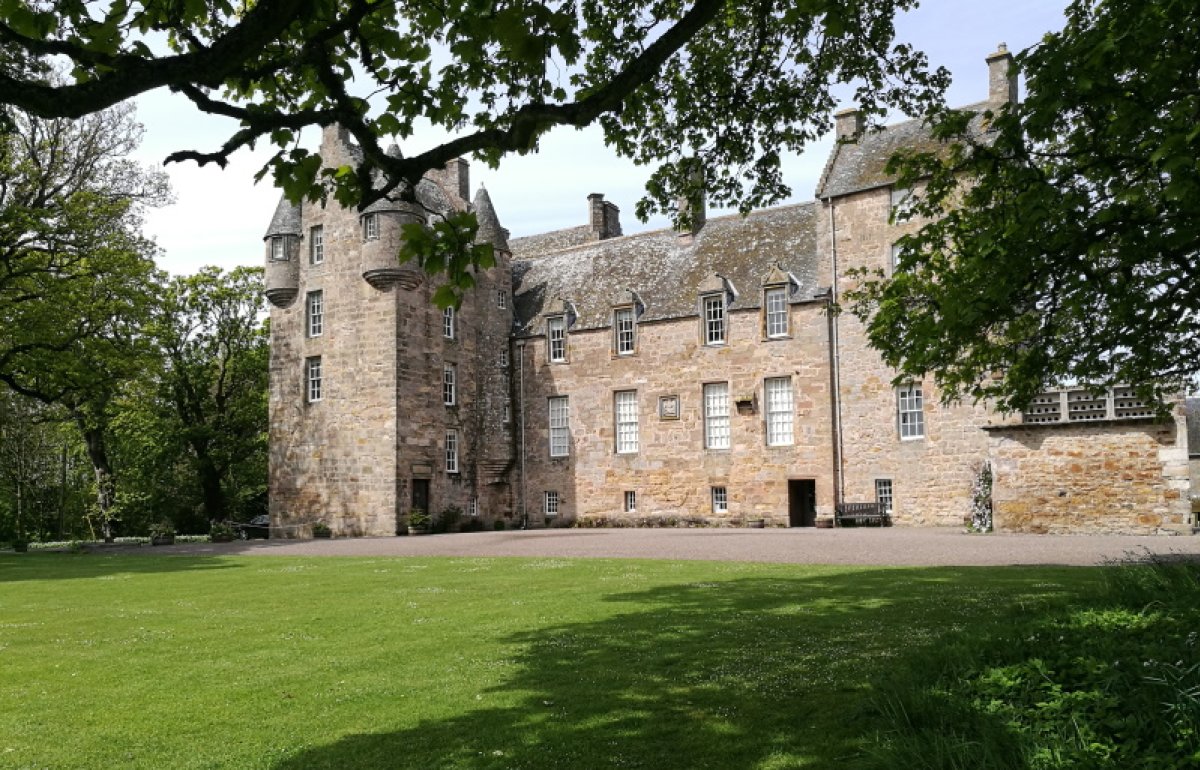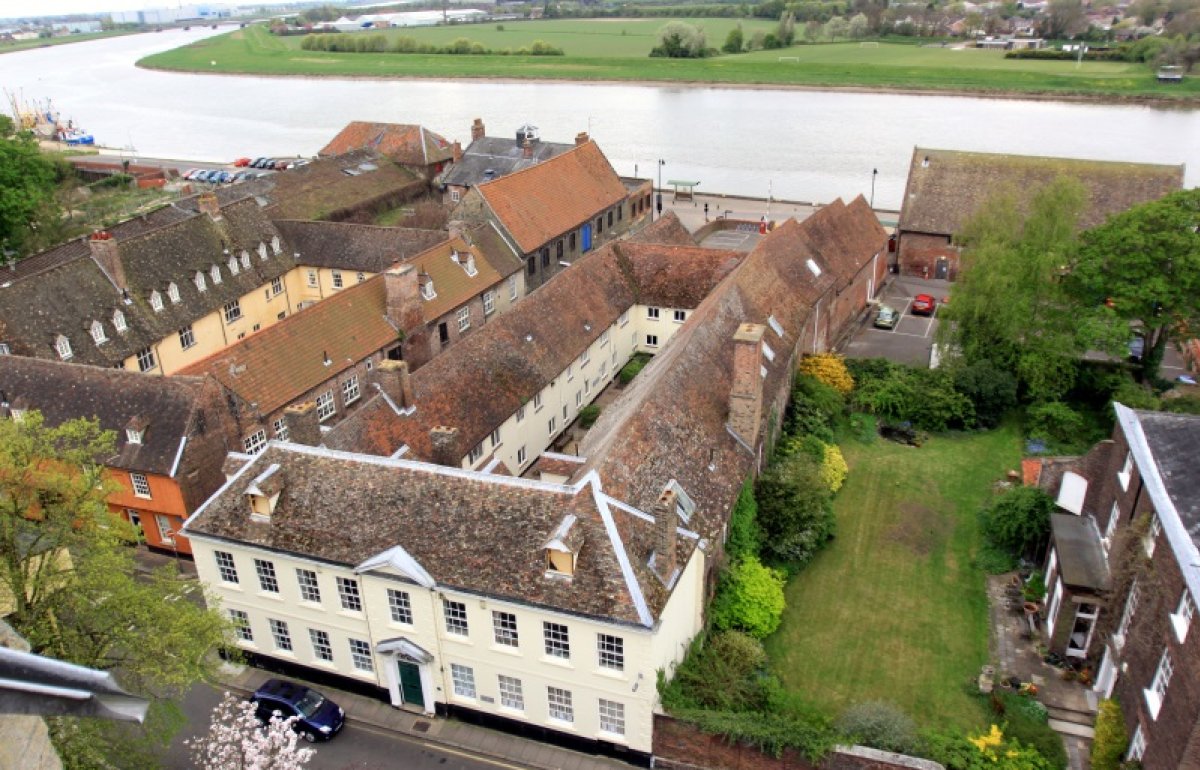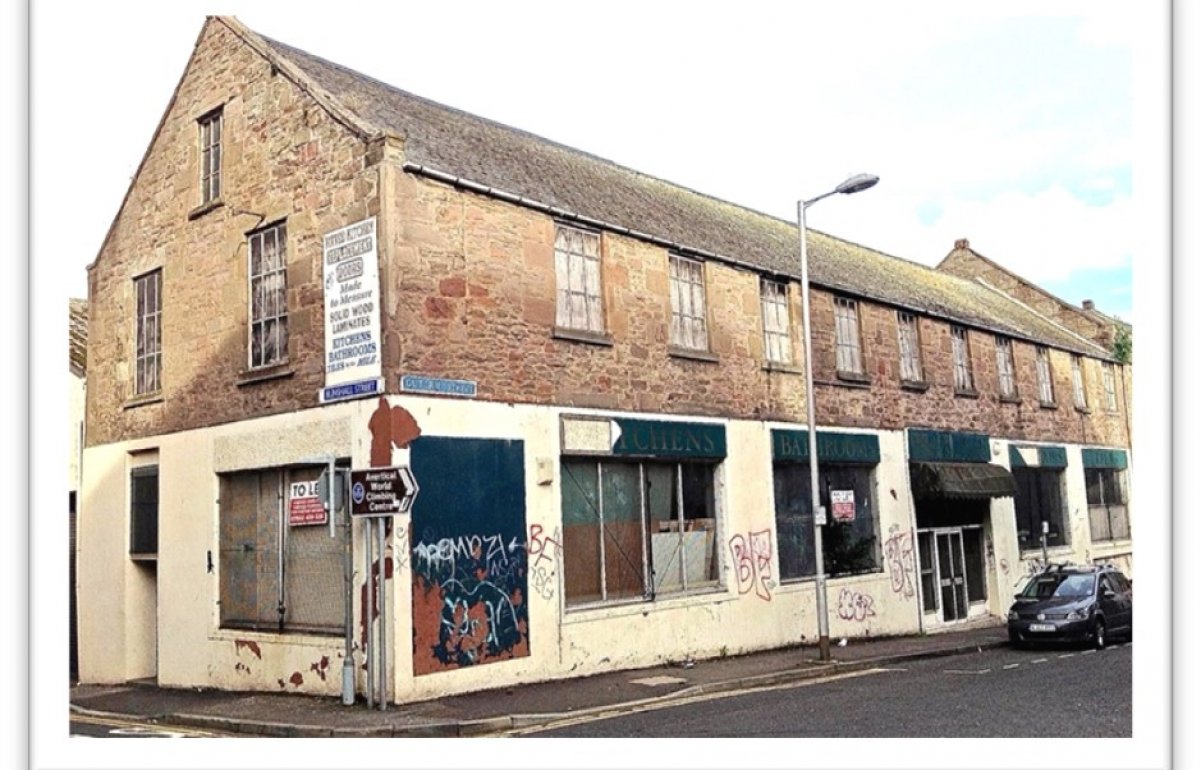
Building in focus: Holy Cross Church, Mwnt, Ceredigion
Share on:
Huddled beneath a vast sky, on the edge of a cliff, dwarfed by a hulking conical hill sits Holy Cross Church at Mwnt, Ceredigion.
My favourite churches and chapels are the ones that sit close to the land, that look truly ancient, even to the untrained eye. Holy Cross is such a church. The humble, white-washed building with slate roof was built around in the 13th century, but it is suspected that people were worshipping on this site for much longer, since around 410-700 AD.
I first came across the church on a walk to scale the hill at Mwnt (Foel y Mwnt), hoping to catch a glimpse of the resident dolphins in Cardigan Bay. I didn’t see any marine life that day, but I feel lucky to have stumbled across a church that stopped me in my tracks with its rugged and persistent beauty.
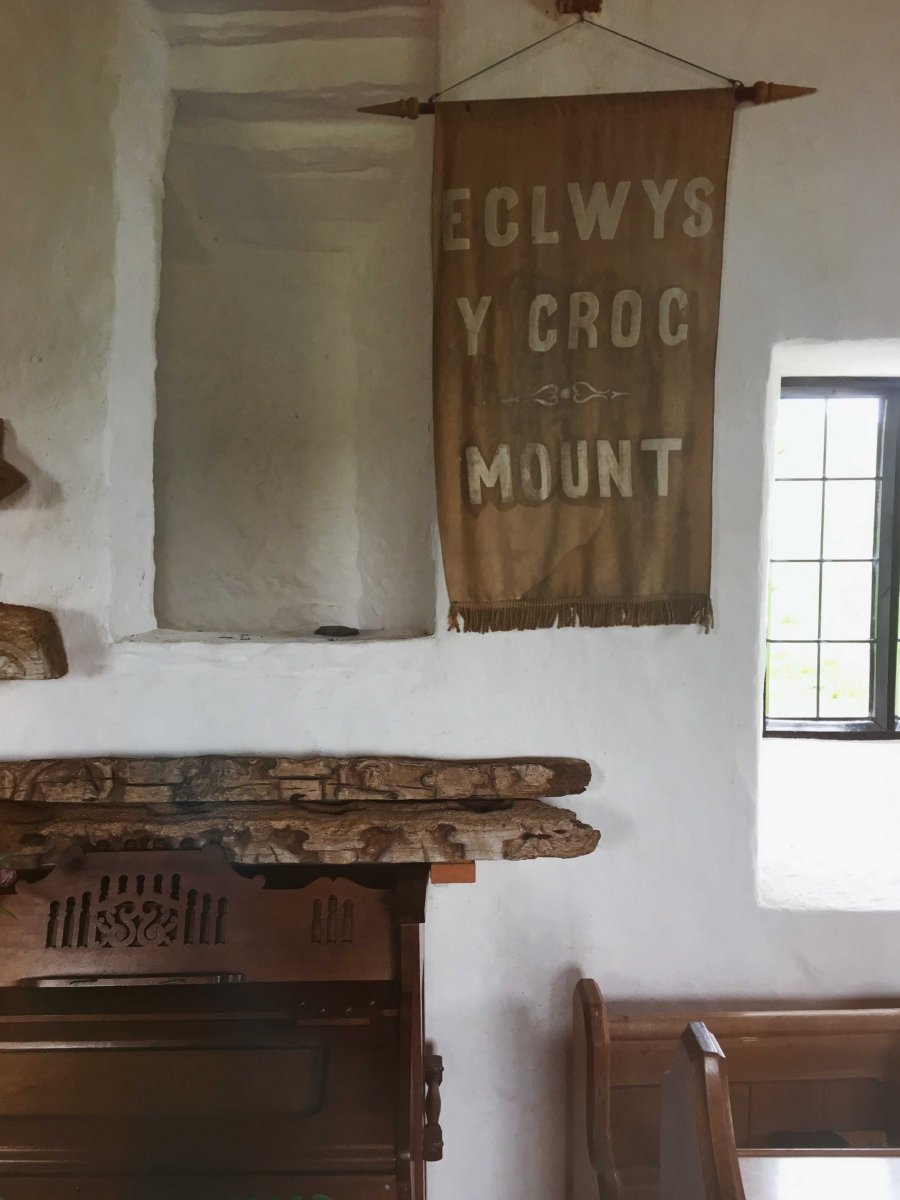
The twin gems at the Grade I-listed Holy Cross Church are the 13th century Preseli stone font and its complete medieval roof. The quiet interior of this single-chamber church is a blend of additions from different time periods – the simple 19th century pews, the carved timbers said to be part of a 15th century rood screen parapet sitting above a neat modern pedal harmonium, and the late-20th century Welsh slate altar.
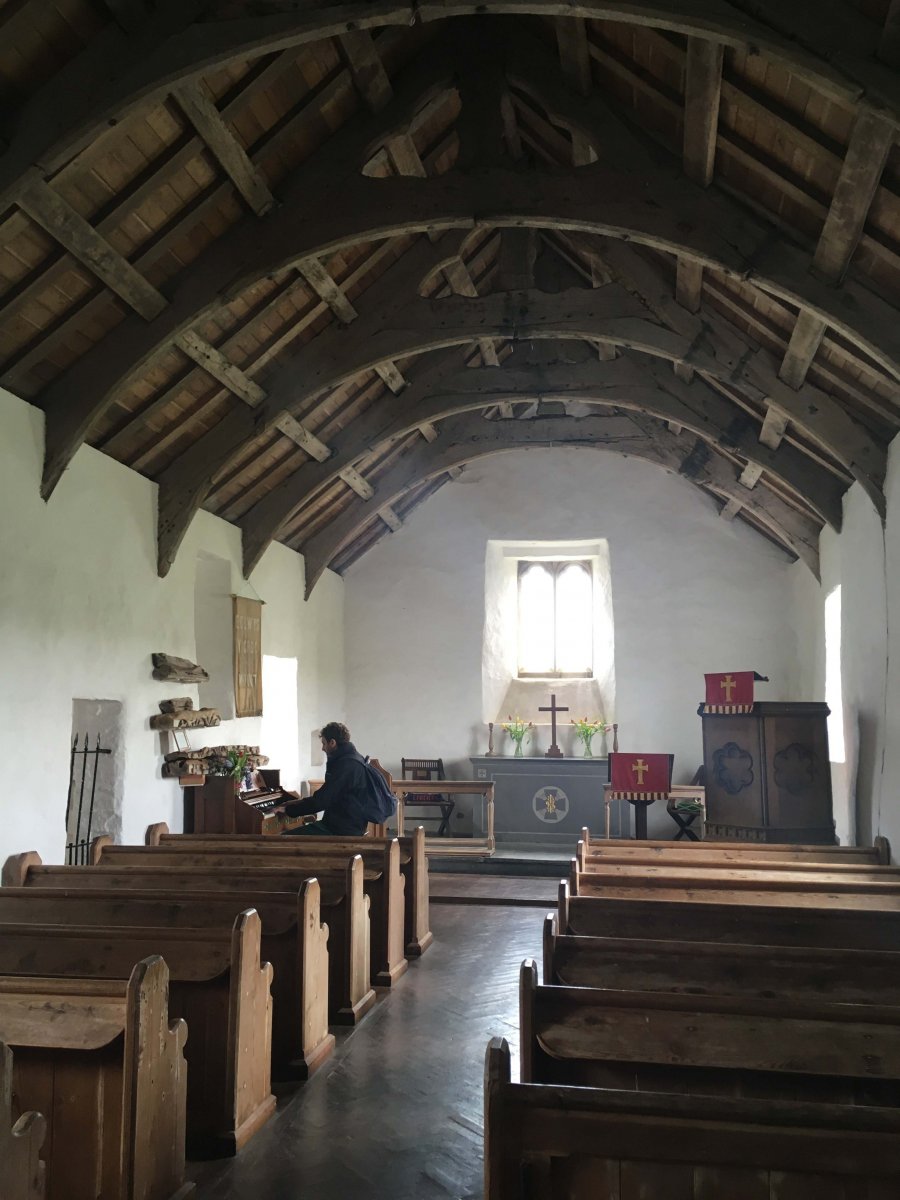
Its dedication to the Holy Cross may have been a reference to a wooden cross that would have sat on the hill at Mwnt. It may have been a preaching cross, a focal point where priests or monks preached to the local community, a beacon to passers-by on the way to St David’s Cathedral further along the coast. Two pilgrimages to St David’s was considered as holy as one trip to Rome, three were equal to a visit to Jerusalem.
Holy Cross Church is an example of a medieval sailor’s chapel of ease – a place for worship built within the parish boundaries for those that live too far from the main parish church. The building sits within a slightly unruly graveyard – the final resting place of some Mwnt residents who lived remarkably long lives. On my first trip to the church I noticed the grave of a William Thomas, buried in 1843 who lived to the age of 101.
Its vulnerable position, perched at the edge of the land, means that it has borne the brunt of bad weather for centuries. In 1853 the church went through extensive repairs when the nave was raised to create a chancel division and a two-decker pulpit was installed (since removed). After a storm battered the tiny church in 1917, it was repaired by local architect G.T Bassett and the roof was lowered.
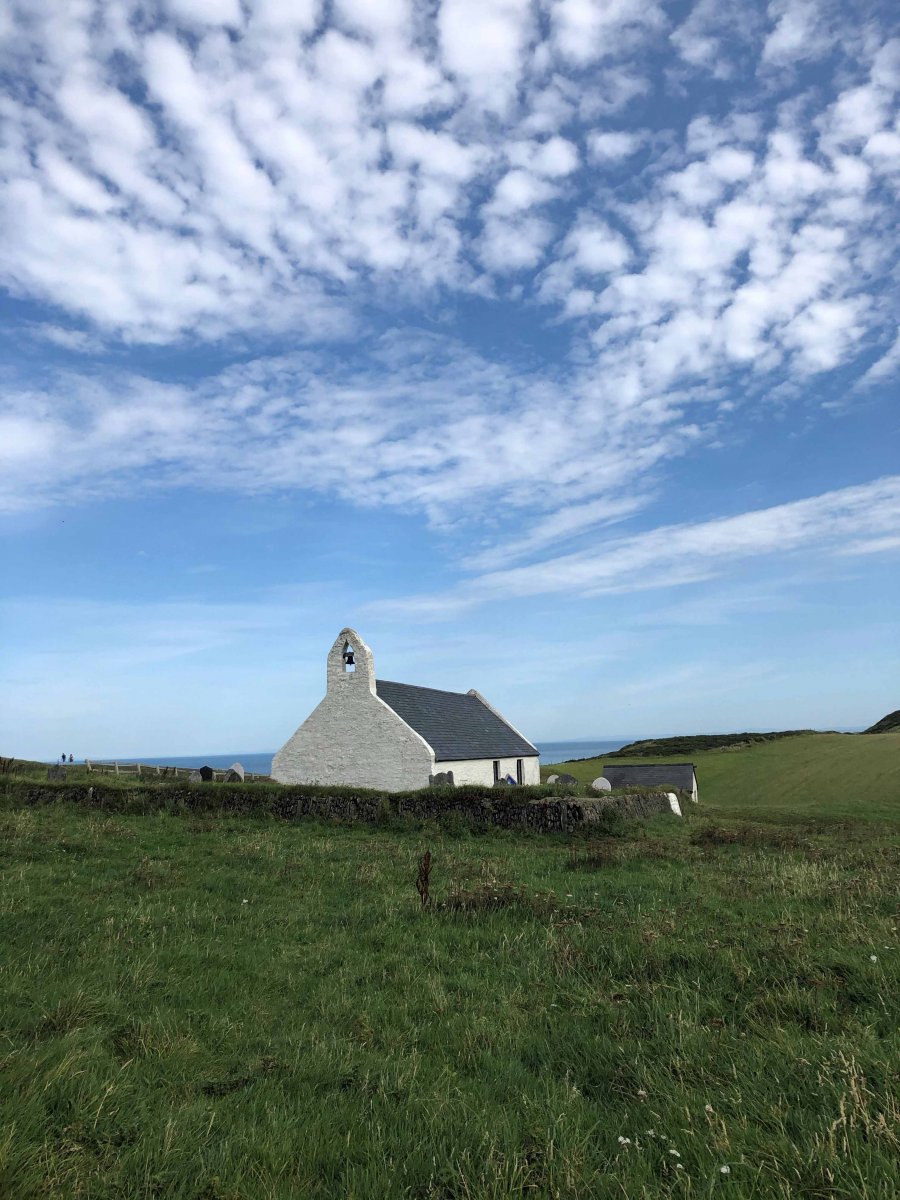
Whether you are sheltering from bad weather or an unquiet mind, the church at Mwnt is a respite. There are no extra embellishments at Holy Cross, but there is a quiet power to the place. I have heard the immediate area and the church itself described as a ‘thin place’, where the barriers between heaven and earth seem weaker. The Church of the Holy Cross has the power to both sedate and stir, regardless of your religious beliefs.
By Ali McClary, SPAB communications manager. First published in the winter 2020 SPAB Magazine, one of the benefits of membership.
Do you have a favourite building? Email us press@spab.org.uk with photos and 600-800 words exploring the history of a building and why you love it.
Sign up for our email newsletter
Get involved

